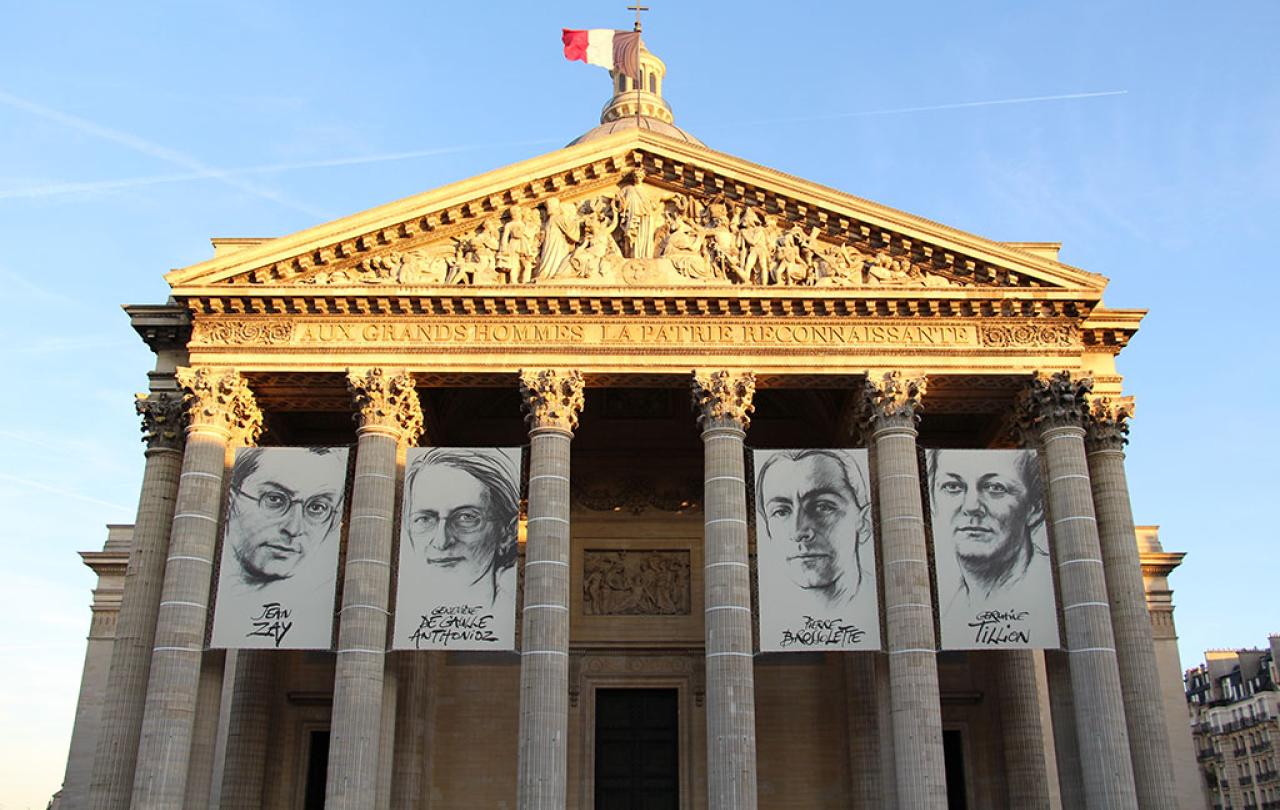In 1939, on the eve of the Second World War, T.S. Eliot gave a series of lectures in the refined setting of Corpus Christi College Cambridge, which were eventually published as The Idea of a Christian Society. In it, he laid out a stark prognosis:
“The choice before us is between the formation of a new Christian culture, and the acceptance of a pagan one."
Eliot thought that his society was neither fully Christian, nor fully pagan, but ‘neutral’. Yet he feared that could not last long. Such ‘political liberalism’ was in danger of fostering its own demise by an indiscriminate refusal to make moral value judgments and decide between versions of the good. As he watched the rise of fascism in Europe, which stood on the verge of the most destructive war in its history so far, he made a significant claim: that the only alternative to what he saw as a pagan totalitarianism was a Christian society.
Closer to our times, a similar thought has occurred to other influential figures. The feminist writer Louise Perry recently mused over the idea that our society is re-paganising, citing the moral conundrum over modern abortion. Despite not being a practising Christian, she sees abortion bearing uncomfortable similarities to pagan infanticide, a sign that we are heading back to a moral scheme with a strong likeness to pagan valuations of human life. The Jewish feminist writer Naomi Wolf has done the same, in an extraordinary essay. Despite a tendency to veer into conspiracy theories too easily, she makes a compelling case that as the Jewish-Christian ethos that underpinned western society has receded, what has emerged is not a benign neutrality, but dark powers that used to lurk in the background of Old Testament religion:
“the sheer amoral power of Baal, the destructive force of Moloch, the unrestrained seductiveness and sexual licentiousness of Astarte or Ashera — those are the primal forces that do indeed seem to me to have returned… or at least the energies that they represent — moral power-over; death-worship; antagonism to the sexual orderliness of the intact family and faithful relationships — seem to have ‘returned,’ without restraint.”
The Nazism to which Eliot referred, as we now know, was a dead end - literally. We console ourselves today with the thought that we have left such extremes behind, that the idolatries of fascism and communism were defeated in 1945 and 1989 respectively, and that we now inherit a secular liberal democratic space which is happily neutral and keeps the peace between different claims to truth – an advance on either paganism or Christianity.
That may be true, but as Rowan Williams pointed out, there is a difference between ‘procedural secularism’ – a non-dogmatic role for the state in helping keep equilibrium in a society where there is no common agreement on truth, and ‘programmatic secularism’, which imposes a distinct set of values on society which tend to inhibit religious expression and denies anyone the right to claim their religious perspective is ultimately true.
The makers of the Olympic opening ceremony, without a trace of irony, justified their creation by saying that it was celebrating French Republican ideas of inclusion, freedom, human rights and so on – the liberty, fraternity and equality of the French Revolution, which was in turn, born out of the French Enlightenment. This was full-on programmatic secularism on display. It was a classically libertarian view of freedom, the absolute freedom to choose what we do with our lives, of individual self-expression, with no overarching, universal idea of the Good, which of course is one particular understanding of what freedom means. It is distinct, for example, from an older view of freedom as gradual liberation from (and therefore the disciplining of) some of our conflicted inner impulses that are deemed destructive of the soul or of society. Secular liberalism that parades itself as self-evident, the opinion of all right-thinking people, is so often incapable of seeing how for others - Muslims and Christians for example - it is anything but self-evident. There are many across the globe who are not content with an overarching moral scheme which insists on telling them that their belief is a private matter rather than a distinct transcendent truth.
So, what if the opening ceremony was a paean to French values, rooted in the French Enlightenment? And what does that have to do with paganism?
The first volume of Peter Gay’s monumental two-volume work on the Enlightenment was subtitled: “The Rise of Modern Paganism.” He pointed out how the philosophes of that same Enlightenment - Diderot, Montesquieu, Voltaire, for example - loved Cicero, Lucretius and the rest. Every educated person at the time studied Greek and Latin, yet these men went deeper to revive pagan ideas, culture and sensuality. They wanted an undogmatic religion, with lots of options, just like paganism – and definitely not the dogma of Christianity. Behind its apparent rationalism or tolerance, the Enlightenment was, for Peter Gay, “a political demand for the right to question everything, rather than the assertion that all could be known or mastered by rationality." It was a rejection of a single creed, in favour of multiple ways of life and belief. The era harked back to the classical past, seeing itself as a completion of the Renaissance, finally leaving behind the vestiges of religion that the Renaissance still retained. The Enlightenment was, Gay argued, not so much the birth of a new rational age, but effectively a renewal of an ancient pagan sensual pluralism.
****
The argument that paganism is returning has a weak and a strong form. The weaker form is that we have returned to a kind of pluralism where there are many objects of worship under an overarching scheme that denies any of them ultimate truth or value.
Paganism was essentially pluralistic. Pagans believed there were many gods who inhabited the universe and who demanded allegiance. Pagan worship was a kind of bargain, whereby if you paid your dues to the gods by offering sacrifices to them, especially the local ones of your city, they would look after you and ensure that things went well. Yet the language of ‘gods’ is confusing. What pagans meant by ‘gods’ was not what Jews or Christians meant (or mean) by ‘God’. Pagan gods belong to nature. They do not transcend it. Pagan gods were objects within the world, rather than the transcendent source of all things, existing precisely beyond physical reality. As St Augustine pointed out, paganism took the good gifts of God and turned them into gods – objects of devotion that they were never meant to be.
If paganism was pluralistic, with numerous objects of worship, none of whom could claim absolute allegiance and who ruled over the lives of their devotees, then modern pluralism bears some distinct similarities. A pluralist public space where each of us is entitled to hold our own sense of what is sacred to us, what is of ultimate value, and where no one perspective is favoured as the one, large distinct truth, gets pretty close to a modern kind of paganism.
Of course there aren’t too many temples to Bacchus, Aphrodite, Tyche or Plutus on street corners in Paris, New York or London. Yet these were the gods of wine, love, chance and wealth. It is hard to deny that the draw of addictive substances, the lure of sex, the hope of a lottery win, or the desire to be rich do not dominate lives in our world.
There is an old saying that you can tell what someone worships by asking what they would sacrifice most for – or, to put it differently, what they think will make them happy. Worship and sacrifice always went together, whether in the Jerusalem Temple in the Old Testament, in classical paganism, or even in Christianity where St Paul urged the followers of Christ to ‘offer your bodies as a living sacrifice.’ Equally, you can tell what a culture worships by the buildings it puts up. If the classical period put up temples to the gods, the Middle Ages put up cathedrals for the worship of the Christian God, our city skylines testify that we put up countless temples to Mammon.
****




